A trainer says these five moves target the most common problem areas in the over-60s
Improve your mobility and stability in five simple steps

We all experience a decline in mobility and strength as we age, but there’s plenty we can do to maintain and even improve these things after retirement, according to NASM-certified trainer Cori Lefkowith.
“Maintaining muscle condition as we get older is essential for staying active, independent and injury-free,” says Lefkowith, who’s the founder of Redefining Strength, a platform focused on health and fitness for the over-40s.
“Mobility and activation work [light weight or bodyweight moves] improve circulation, posture, balance and coordination, which together help prevent falls and support strong, pain-free movement.”
Lefkowith has shared her top five stretches for mobility and stability with Fit&Well, explaining these static and dynamic moves target common problems she often sees in her clients over 60.
“From tight hips to sore necks, this is a head-to-toe series that supports balance, posture, and quality movement,” she says.
You won’t need any special equipment, just a wall, a chair and a step.
1. Calf raise
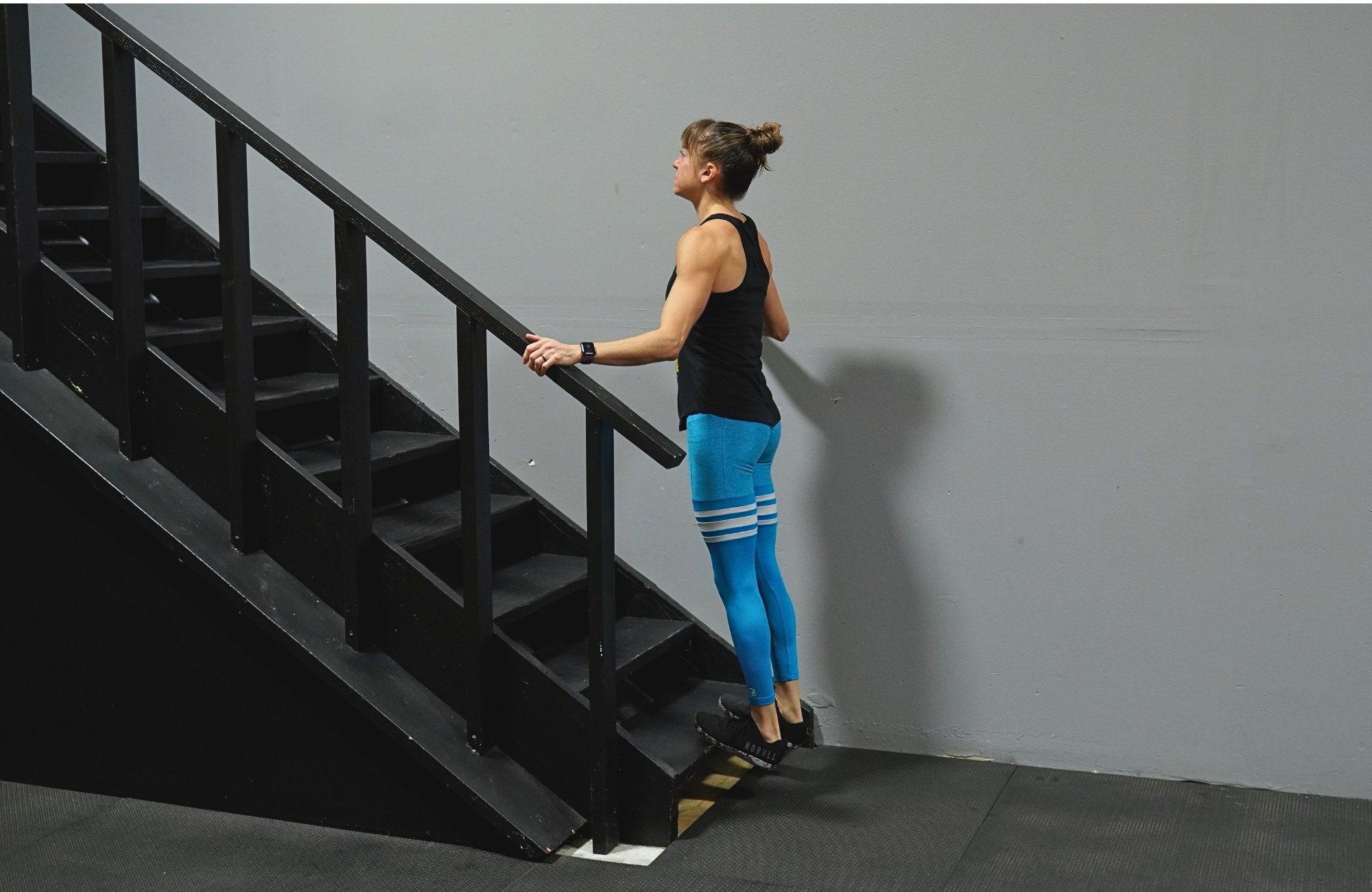
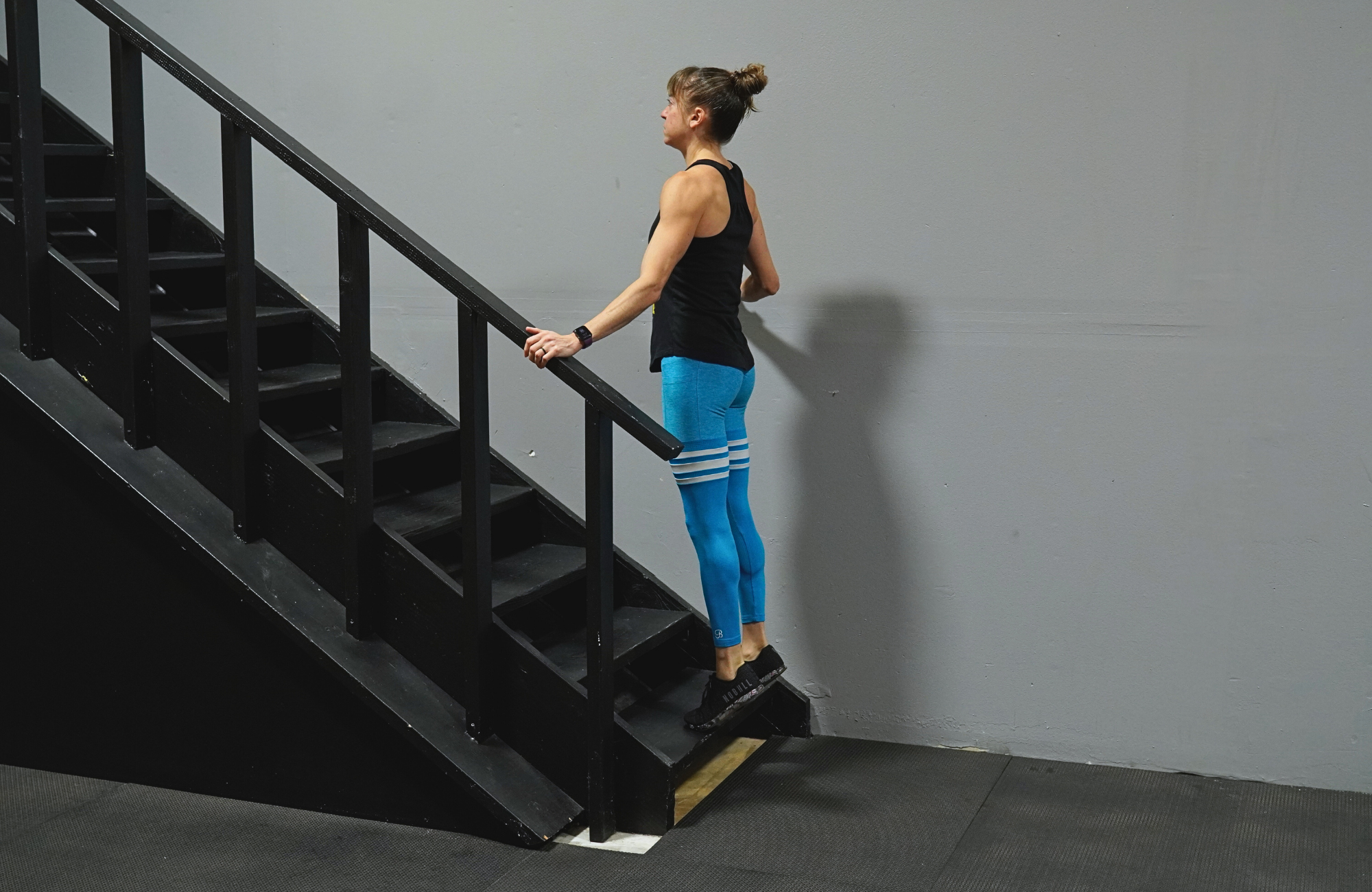
Sets: 1-2 Time: 30sec
Start your week with achievable workout ideas, health tips and wellbeing advice in your inbox.
How to do it:
- Stand with the balls of your feet on the edge of a step, weight plate or other raised platform, heels hanging over the edge.
- Hold onto a chair or a wall for balance if needed.
- Drive up onto your tiptoes, lifting your heels as high as possible and engaging your calves.
- Pause, then slowly lower your heels below the platform to feel a calf stretch.
“As we get older, our ankle mobility can become restricted, limiting how deeply we can squat and even making it harder to get down and up off the floor,” says Lefkowith.
“While we often blame our hip mobility, it may be our ankles that are the issue. This move improves your ankle mobility and stability.”
By using a raised platform, you’re working through a bigger range of motion than from the floor, which makes it more effective at improving your mobility, range of motion and stiffness.
2. Winged chest stretch
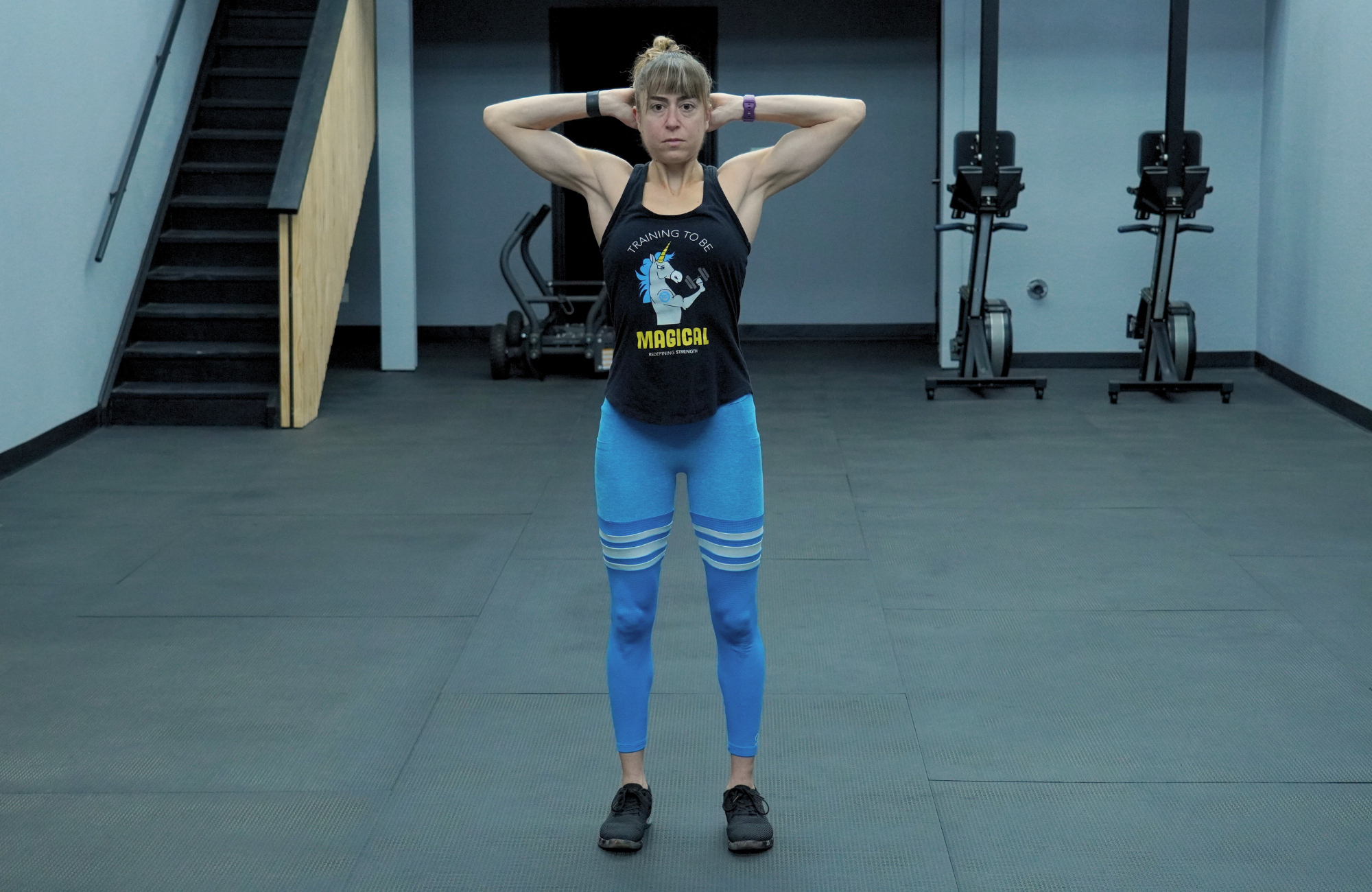

Sets: 1-2 Time: 30sec
How to do it:
- Stand with your hands behind your head and your elbows pointing out to the sides.
- Bring your elbows together in front of your face—you should feel a stretch in your upper back.
- Open your arms wide again, squeezing your shoulder blades together.
“This stretch is a great way to open up your chest while activating and strengthening your upper back,” says Lefkowith.
“It addresses a hunched and rounded spinal posture that we can develop as we get older, and helps us avoid neck, shoulder and even upper back aches and pains.”
3. Half-wall hang
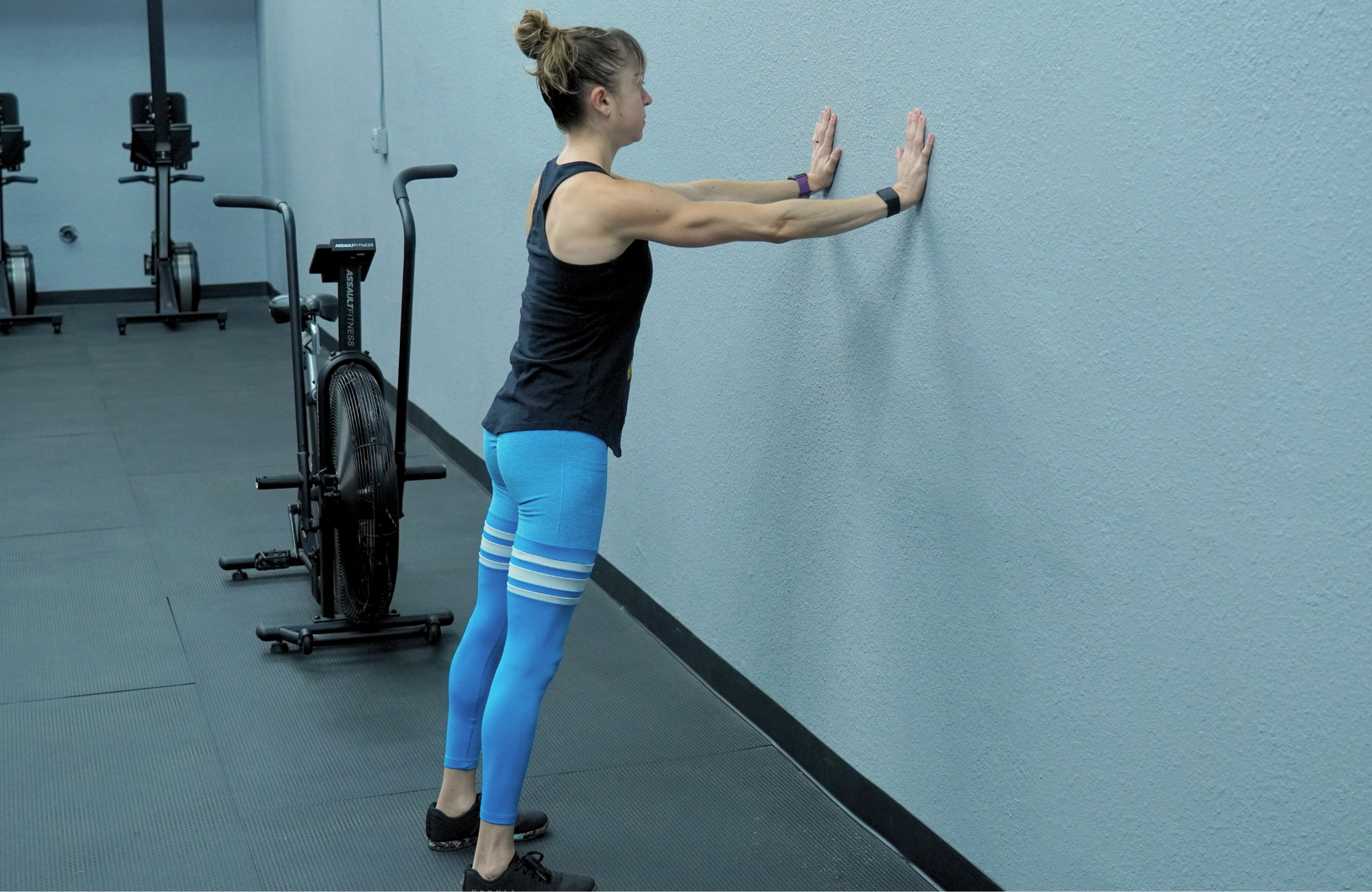
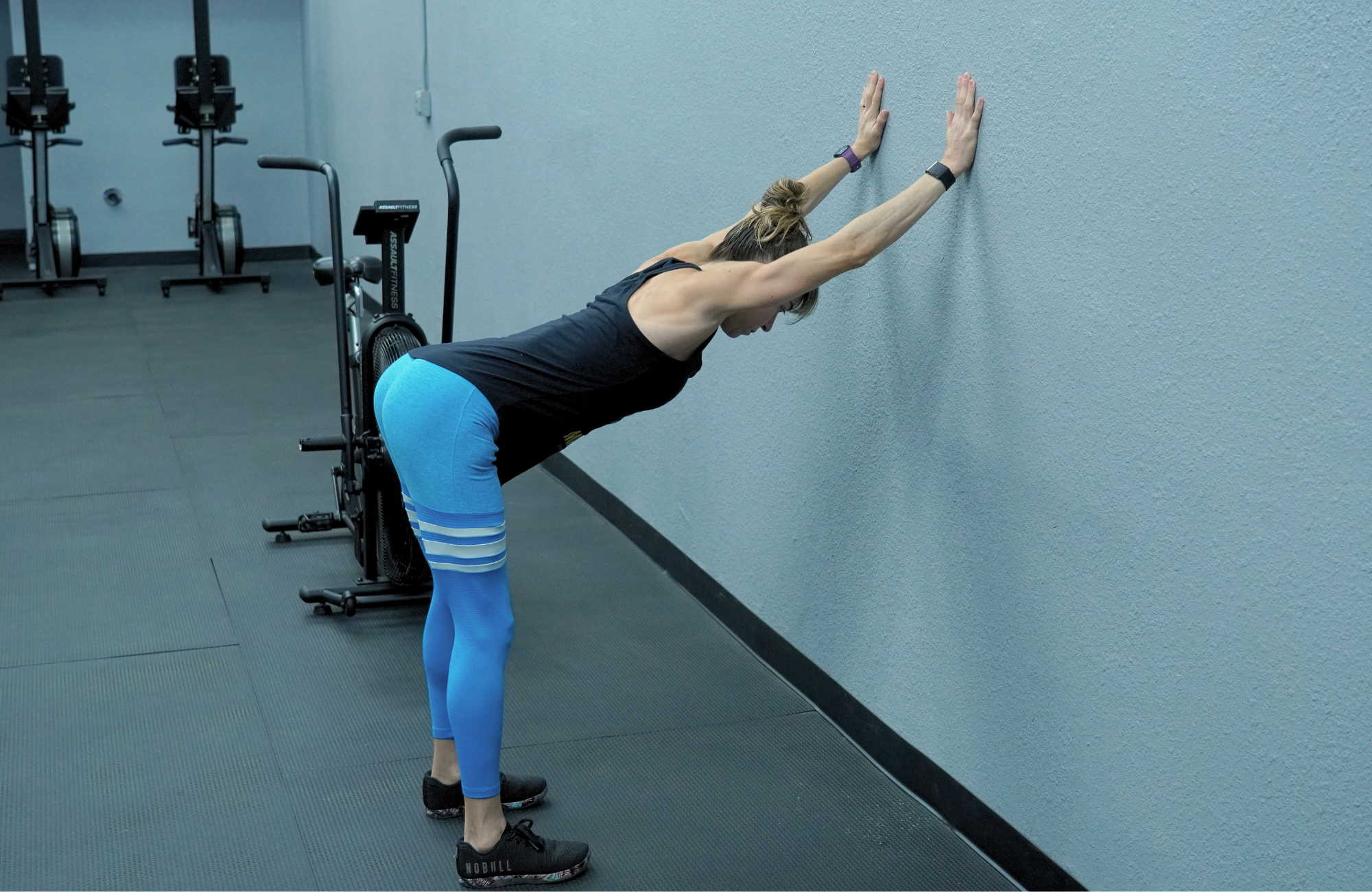
Sets: 1-2 Time: 30sec
How to do it:
- Stand facing a wall and place your hands on it about shoulder-height.
- Walk your feet back and hinge at your hips, lowering your chest.
- Keeping your arms straight, push against the wall. Your ears should be in line with your arms, your knees should be slightly bent and your back should be straight.
- Hold for a few deep breaths, then return to the start.
“This stretch works on spinal extension, especially thoracic [mid-back] extension, which can become limited as we get older, leading to neck, shoulder, upper back and even lower-back aches and pains,” explains Lefkowith.
4. Seated pigeon
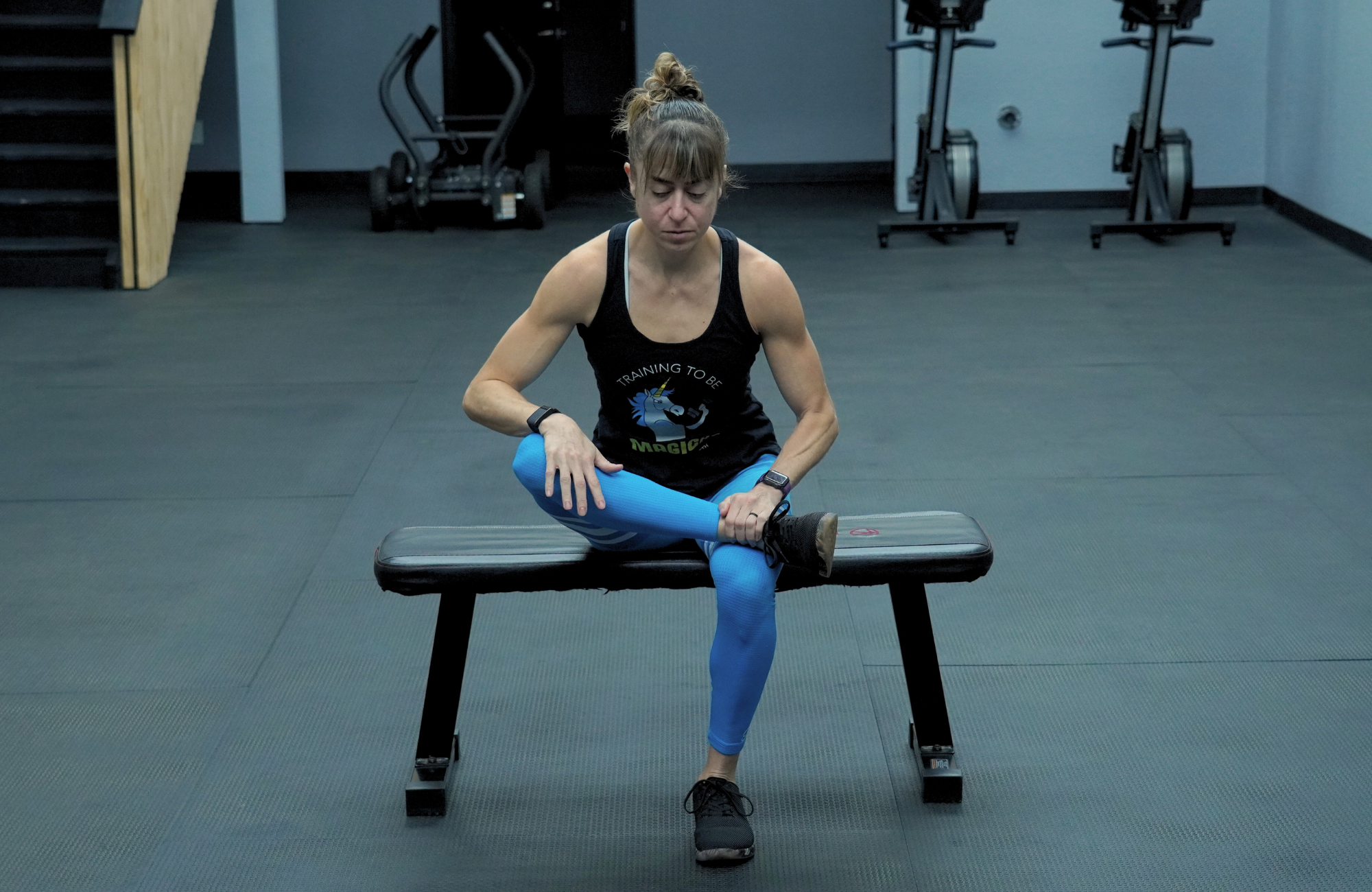
Sets: 1-2 Time: 30sec each side
How to do it:
- Sit upright in a chair.
- Place one ankle on top of the opposite knee.
- Press down on your raised knee, stretching the outside of your hip and glute.
- Hinge forward from your hips to deepen the stretch, pushing your buttocks back as you do.
- Hold for time, then return to the starting position and repeat on the other side.
“This stretch helps keep your hips mobile and healthy. It can help us alleviate hip and even lower-back pain, especially if we spend a ton of time seated,” says Lefkowith.
If you feel any pressure or pinching in your knee, flex the foot of the crossed leg and avoid pushing down on your knee.
5. Glute bridge
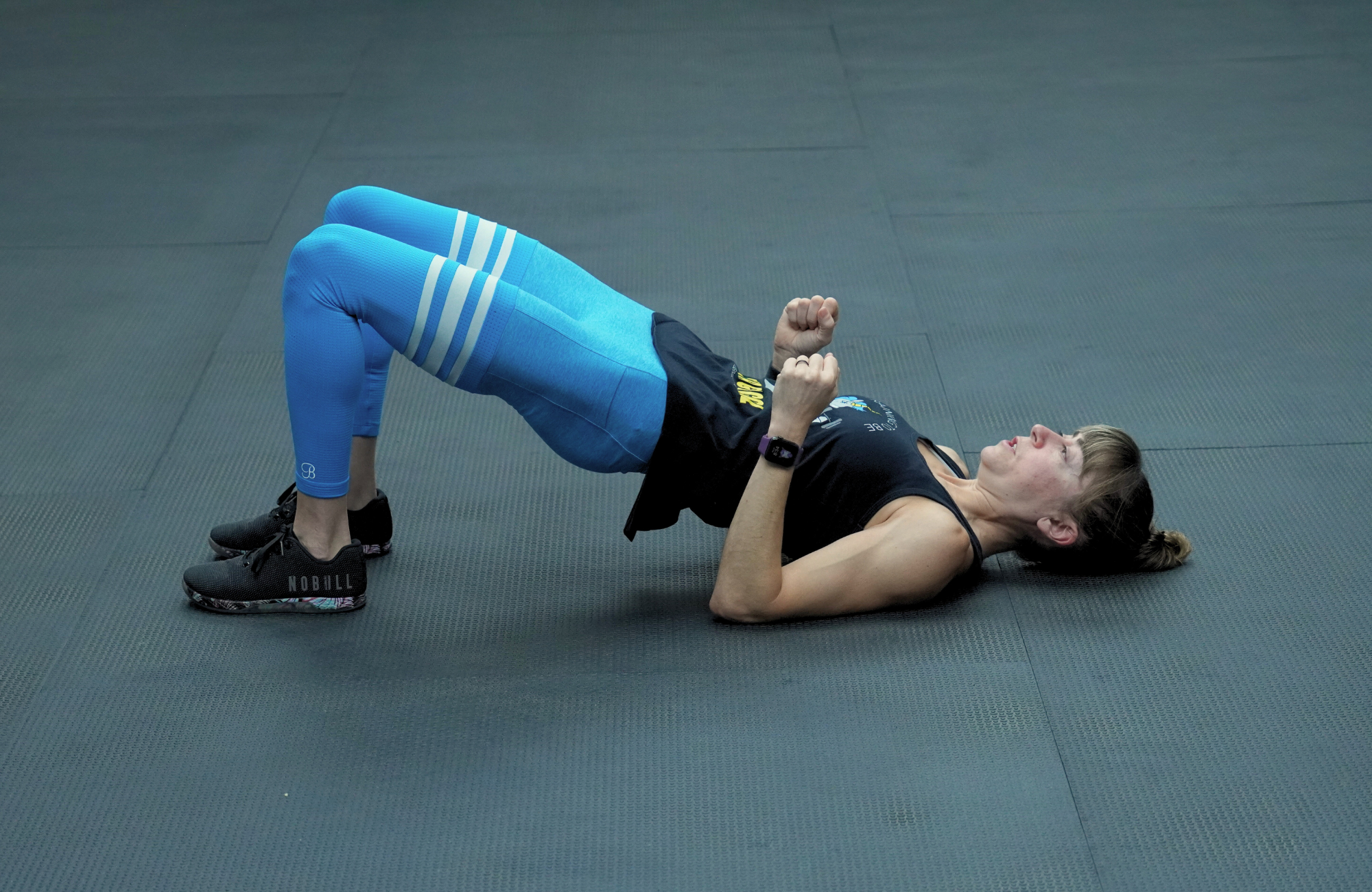
Sets: 1-2 Time: 30sec
How to do it:
- Lie on your back, with your knees bent and feet flat on the floor about hip-width apart.
- Place your arms on the floor next to you and bend your elbows, so your forearms are vertical.
- Tuck your pelvis slightly by pressing your lower back into the floor.
- Drive through your feet to lift your hips until your body is in a straight line from shoulders to knees.
- Pause, squeezing your glutes, then lower with control.
“This activation move will not only strengthen your glutes and abs to help you prevent and alleviate knee, hip and back pain, but it will also improve your hip and spinal stability,” says Lefkowith.
“By working your glutes, you’ll also stretch your hips to improve your hip mobility. If you’ve been finding your hips are tight no matter what, this is a must-do.”

Cori Lefkowith is a NASM-CPT, author of The STRONG System, is the founder and head coach of online fitness company Redefining Strength. She teaches others how to train smarter so they can achieve the results they've always wanted with a routine that fits their busy lifestyle.

Lou Mudge is a Health Writer at Future Plc, working across Fit&Well and Coach. She previously worked for Live Science, and regularly writes for Space.com and Pet's Radar. Based in Bath, UK, she has a passion for food, nutrition and health and is eager to demystify diet culture in order to make health and fitness accessible to everybody.
Multiple diagnoses in her early twenties sparked an interest in the gut-brain axis and the impact that diet and exercise can have on both physical and mental health. She was put on the FODMAP elimination diet during this time and learned to adapt recipes to fit these parameters, while retaining core flavors and textures, and now enjoys cooking for gut health.
You must confirm your public display name before commenting
Please logout and then login again, you will then be prompted to enter your display name.
